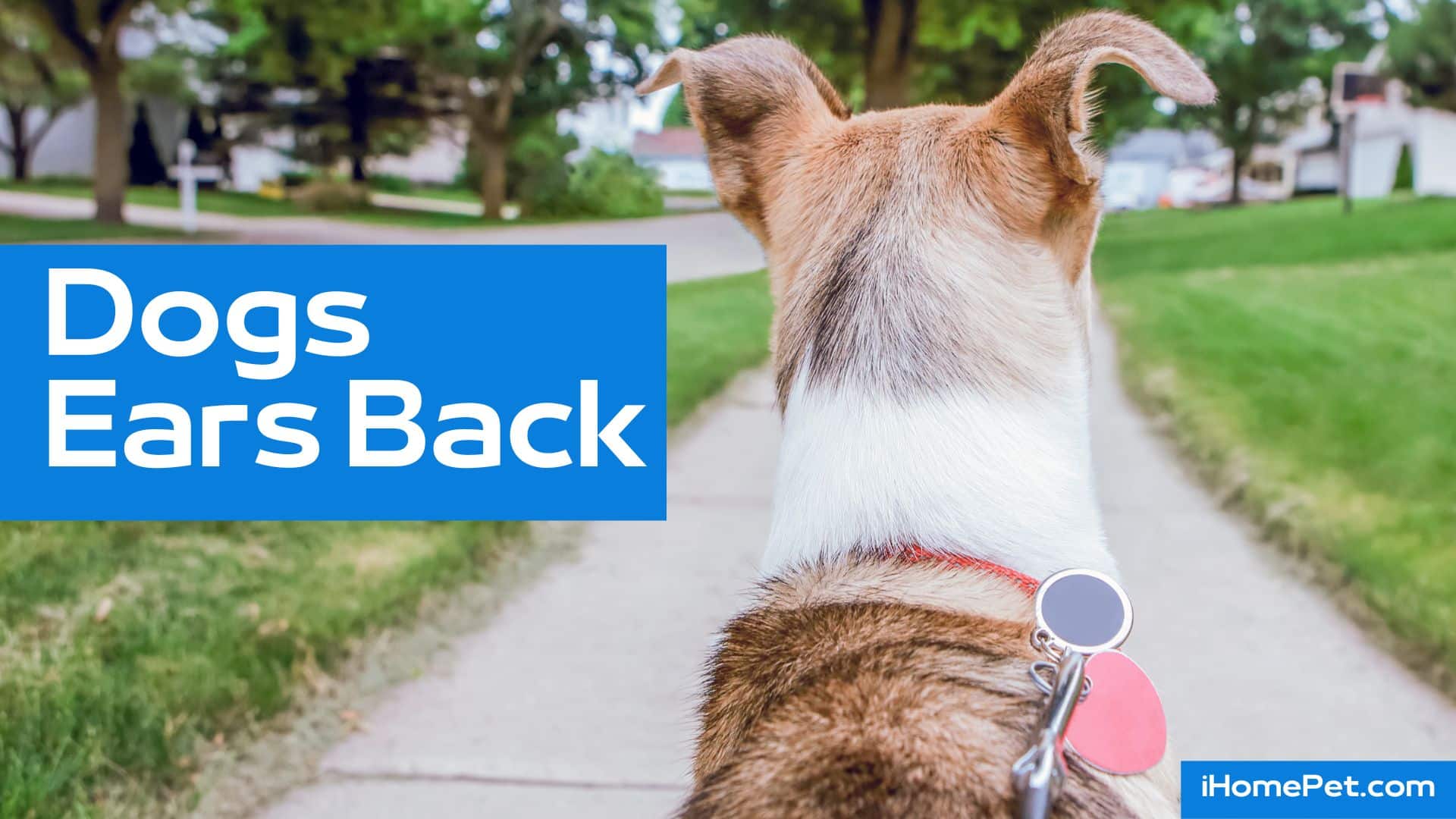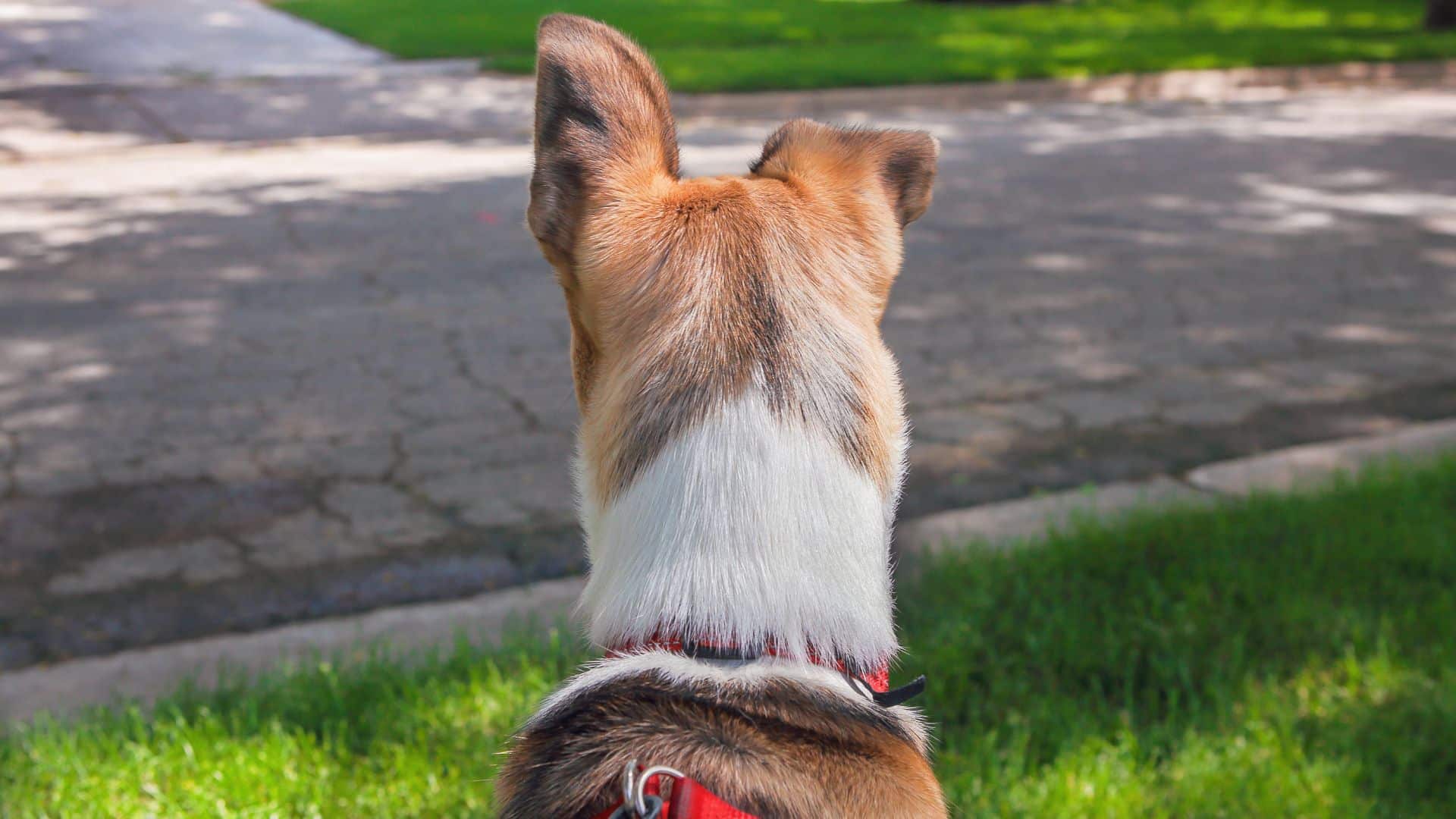Over time, dogs have developed highly expressive modes of communicating their feelings to us through their bodies. One of these is the ear position. Dogs ears back can be a significant indicator of how it feels or what it needs to know.
As man’s best friend, dogs have made excellent companions for ages. Their obedience, love, and attention to details are unmatched. This ability to connect with our best friends is made possible by the uniqueness of our ability to communicate, either verbally or non-verbally.
What does the dog ears back position mean?

To read the correct expression, you need to carefully study the appearance, shape, and position of the dog’s ears, just as with other parts of its body.
To help you better understand the dog’s ear position communication modes, this article will elaborate on the back position. Read along and learn how to interpret what your canine friend could be trying to tell you.
By now, you already know that your dog’s ears are not just for listening purposes. They can be used for talking too. You just have to listen. The ears when laid back can be in a very different position, each of which tries to tell you something. Let us now take a look together at some of the positions and what they communicate.
Ears slightly laid-back
This ear position can communicate a lot of messages. You have to spot other dog body languages in order to unlock it’s true meaningfully. If the ears are laid back together with the mouth relaxed, the head lowered and the tail freely wagging, then the dog is being happy and is feeling very friendly.
In this state, the dog is relaxed and is not worried much about its surroundings. It gives the actions around him very minimal attention since it feels safe. This could mostly be when he is near you.
But when the puppy’s eyes are closed with the head lowered, tail tucked and showing the “whale eye,” then he is being defensive and anxious. The probability of biting is also high.
Ears tightly pinned flat back
If your furry companion stays still, eyes wide open, tail tucked, the body low on the ground and the hind legs under him, then the dog is extremely terrified and might leave the scene very fast at the most opportune moment.
Ears laid back low
This is when the dog has his ears back and low on his head. He has squinty eyes; he lowers his body and raises a paw. This shows submission especially when he recognizes a leader.
Most of us have experienced this after coming back from work and finding the house in a mess, and he knows he is the one who has been messing around the house.
Then there is submission after losing a fight
This is categorized by rolling his back on the ground and showing the belly. The dog’s adrenaline is high and is preparing to take flight. This shows he has given up and should not be hurt anymore.
Ears down and partially flattened on the head
This shows an anxious dog. There could be something in his surroundings that makes him uneasy. He feels helpless and senses fear. If your dog is in such a state, do not provoke him, as he can attack anyone out of desperation.
Apart from the laid-back ears, look out for whining noises, dislike for people and objects, rapid panting, and dilated pupils. Other dogs pull their relaxed ears forward to show curiosity or interest.
Ear positions changing
There are certain instances where the dog shifts the positioning of the ears as it stares and you. At some point, they will be in the “dog’s ears back” position, sometimes in the “dog’s ears forth” position and so on.
Plus, this depicts uncertainty in the communications between you and Poppy. Neither understands the other. The shifts in positions show that the dog is puzzled and is waiting for clear communication of what to do.
Ear position that may reflect injury
Your canine companion may have an ear infection if you notice any of the following signs: frequent scratching or rubbing of the ears, head shaking, discharge or odor coming from the ears, redness or swelling in the ear canal.
It is important to consult a veterinarian for proper diagnosis and treatment to prevent further discomfort or complications. Sometimes a blood vessel inside the ear can rupture due to trauma or injury, causing a condition known as a hematoma.
Ears up with a wagging tail
A playful dog will run towards its favorite toy, ready to engage in a game of fetch. It will eagerly jump and bark, excitedly waiting for its owner to throw the toy. The dog’s energy and enthusiasm are contagious, making playtime a joyful experience for both the pet and its human companion.
Most dogs that are in a relaxed position will have their ears up and a wagging tail. This indicates that they are alert and ready for interaction. It is important to pay attention to a dog’s body language, as it can provide valuable insights into their mood and behavior.
Ears folded or floppy ears
Facial expressions and other body language can provide important cues about a person’s emotions and intentions. An individual dog can use his ears to express emotion and communicate with others in his pack.
As a pet parent, you need to look for any possible warning sign that your dog’s ears are folded or floppy. Folded ears can indicate fear or anxiety, while floppy dog ears may suggest relaxation or contentment.
However, it’s important to remember that each dog is unique, and their ear expressions should be considered in conjunction with other signals to accurately interpret their emotions and intentions.
Fearful or anxious dog body language

Your dog’s body language can reflect a fearful dog if they exhibit certain behaviors. Some signs of fear or anxiety in dogs include trembling, cowering, tail tucking, ears pinned back, and avoiding eye contact.
Additionally, fearful dogs may also display excessive panting, pacing, yawning, or lip-licking. It is important to recognize these signals and provide a safe and comforting environment for your dog to help alleviate their fears.
Dogs put their ears back sometimes when the dog feels threatened or stressed. This can be a sign that they are trying to make themselves appear smaller and less threatening. It is important to approach a stressed dog with caution and give them space to feel safe.
Aggressive dog behavior body language
Not all dogs have the same aggressive behavior, as it can vary depending on their breed, upbringing, and individual temperament. Some common signs of aggression in dogs include growling, baring teeth, lunging, and raised hackles.
Other visual signals include panting excessively or a drastic change in your dog’s emotions, such as sudden fear or anxiety. It is important to note that behavior changes in dogs should not be taken lightly and should be addressed by a professional dog trainer or behaviorist.
An aggressive body language can show up if the pup feels threatened or if they are trying to protect their territory. It is crucial for dog owners to understand and interpret their pet’s body language accurately in order to prevent any potential aggressive incidents and ensure the safety of both the dog and those around them.
What is some of the other dog ear positions beside the “ dog’s ears back ” position?

As a loving pet owner who always strives for the best for his best friend, there are a couple of the dog ear positions that you should be aware of.
Just as earlier stated, a female dog does not only use his ears for listening to stuff around him. They use them to communicate with us as well. Here are some of the other positions and what they could probably be said about the dog.
#1. Pricked ears
This ear position tells you that your dog is quite intrigued by something in his vicinity. Most dog breeds raise their ears up to listen closely. You should then check to see what could be attracting his attention.
Additionally, this can happen too during playing time to show that he is paying attention and is interested in whatever activity you two are involved in.
#2. Ears straightened up
This normally manifests dominance in your canine friend. Also, this posture is accompanied by wide open and staring eyes, the mouth stays closed or remains slightly opened. The dog then maintains a tall posture to dominate his subject.
Moreover, the tail stays stiffened and fluffed up, rising from the rest of the body. Occasional low grunts and growls can be heard. High-frequency sounds or loud noises also cause your dog’s ears to perk up and become more alert. Additionally, the dog’s eyes widen and its body tenses in preparation for any potential threat.
What if my dog’s ears are cropped?
The majority of ear position gestures involve movements of other body parts. In cases where your dog’s ears are cropped and you cannot, therefore, position them to communicate, look for alternatives. The dog’s tail, face, and other body postures are perfect alternatives for communication.
Cropped ears can mean that your dog may rely more heavily on other forms of body language to communicate. When their ears are relaxed slightly forward, it may indicate that they are alert and interested in their surroundings.
Conclusion
The “dog’s ears back” position is a critical nonverbal communication method that your dog normally adopts when something is up around her. There are instances where the dog’s attention may be attracted elsewhere and not respond to your verbal calls.
In such a case, look at the dog’s ears and figure out what is going on in the furry friend’s mind. He might be too focused on an unfamiliar object or sounds around him. This would be communicated by pricked upright ears. You should, therefore, be attentive to the dog’s ear positions and communicate better with your friend.
Last Updated on 16/03/2025 by Karen Snow
Hi! I’m Karen and a certified dog lover. As a freelance writer and blogger, I do my best to squeeze in some time with my dogs, learning more about the way they act and how I can make sure that they continue to stay well-cared for by yours truly.
My dogs have helped me through a lot, and this is my way of giving back to them! Besides animals, I also love to travel and cook, having explored my country’s restaurants and unique places. Follow me as I show you all the amazing tips and bits of information I learn along the way about our furry friends!
